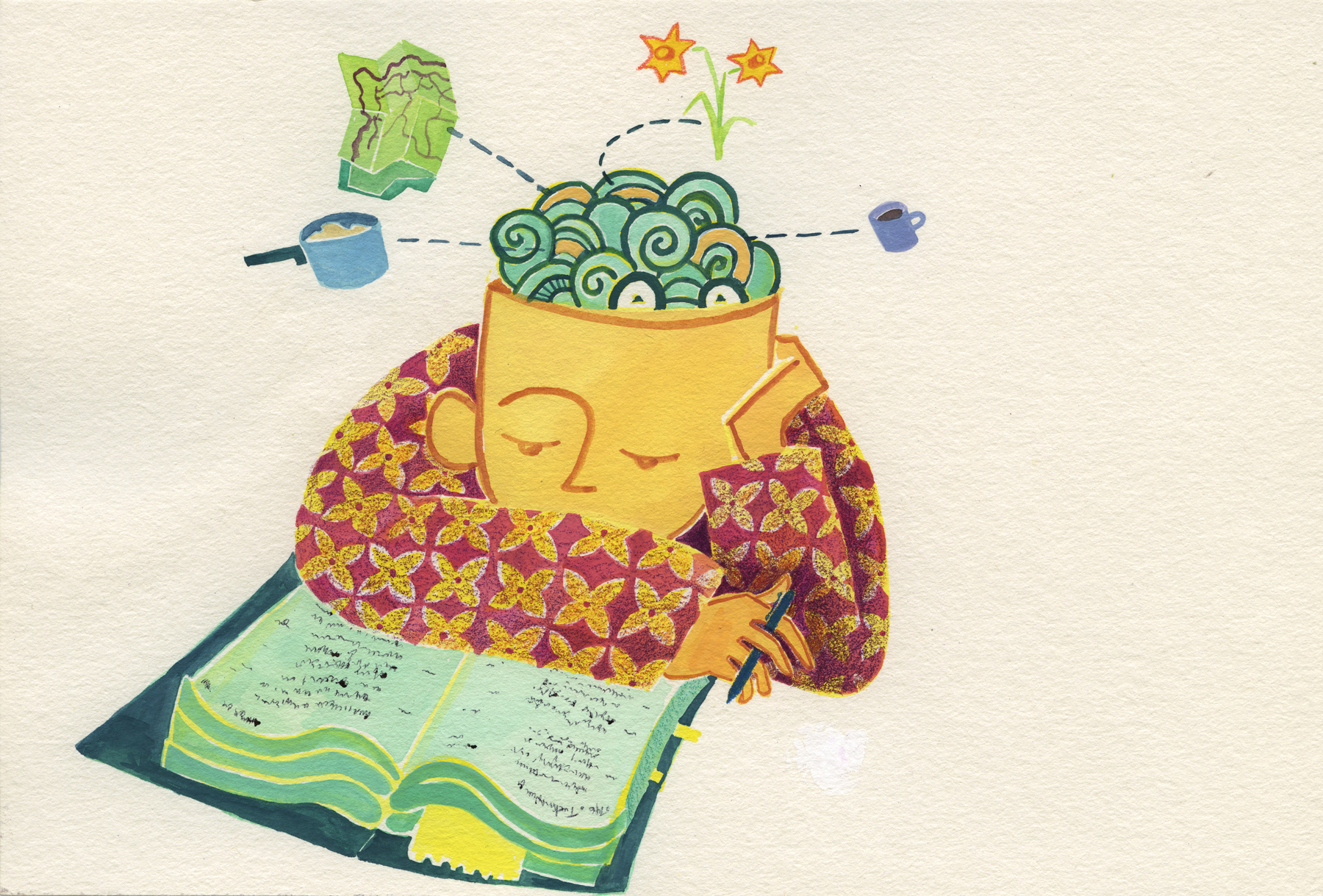Difference between revisions of "Mental Real Estate"
Caseorganic (Talk | contribs) |
Caseorganic (Talk | contribs) |
||
| (2 intermediate revisions by the same user not shown) | |||
| Line 1: | Line 1: | ||
| + | [[Image:mental-real-estate-maggie-nichols.jpg|center|600px]] | ||
===Definition=== | ===Definition=== | ||
| − | Mental real estate is a way of describing the amount of space one has in one's mind, and how much of it is taken up by one idea-set, brand, or other preoccupation. It could be used to describe the availability of space in one's mind, and how certain activities, inputs and preoccupations influence the space in one's mind. | + | Mental real estate is a way of describing the amount of space one has in one's mind, and how much of it is taken up by one idea-set, brand, or other preoccupation.<ref>Rossio, Terry. Mental Real Estate. Screenwriting Column 42. Wordplay Columns. Accessed 22 Sept 2012. http://www.wordplayer.com/columns/wp42.Mental.Real.Estate.html</ref> It could be used to describe the availability of space in one's mind, and how certain activities, inputs and preoccupations influence the space in one's mind. |
| − | Brands wage wars over mental real estate. The mental real estate that one has when the word "tissue" is mentioned is taken by "Kleenex" over "Puffs". Mental real estate of consumers of brands is the highest commodity. It is the life or death of a brand. Sometimes, whatever gets into a person's mind first is fixed in place and very difficult to remove by a later memory. | + | Brands wage wars over mental real estate. The mental real estate that one has when the word "tissue" is mentioned is taken by "Kleenex" over "Puffs". Mental real estate of consumers of brands is the highest commodity. Mental real estate is the most valuable real estate in the world.<ref>Ibid.</ref> It is the life or death of a brand. Sometimes, whatever gets into a person's mind first is fixed in place and very difficult to remove by a later memory. |
| − | Dunbar's Number is a good way of describing how many concurrent friends you can actually have. On Facebook, neuroplasticity -- it seems like it's an augmentation in training, where you can feel you care about 500 people in tandem, but | + | Dunbar's Number is a good way of describing how many concurrent friends you can actually have. On Facebook, neuroplasticity -- it seems like it's an augmentation in training, where you can feel you care about 500 people in tandem, but one's brain can only reasonable interact with a number closer to 150<ref>Hernando, A.; Villuendas, D.; Vesperinas, C.; Abad, M.; Plastino, A. "Unravelling the size distribution of social groups with information theory on complex networks". 2009.</ref> that really these other people in real life have fallen off the map otherwise. |
| + | |||
| + | ==References== | ||
| + | <references /> | ||
[[Category:Book Pages]] | [[Category:Book Pages]] | ||
[[Category:Finished]] | [[Category:Finished]] | ||
| + | [[Category:Illustrated]] | ||
Latest revision as of 05:34, 23 September 2012
Definition
Mental real estate is a way of describing the amount of space one has in one's mind, and how much of it is taken up by one idea-set, brand, or other preoccupation.[1] It could be used to describe the availability of space in one's mind, and how certain activities, inputs and preoccupations influence the space in one's mind.
Brands wage wars over mental real estate. The mental real estate that one has when the word "tissue" is mentioned is taken by "Kleenex" over "Puffs". Mental real estate of consumers of brands is the highest commodity. Mental real estate is the most valuable real estate in the world.[2] It is the life or death of a brand. Sometimes, whatever gets into a person's mind first is fixed in place and very difficult to remove by a later memory.
Dunbar's Number is a good way of describing how many concurrent friends you can actually have. On Facebook, neuroplasticity -- it seems like it's an augmentation in training, where you can feel you care about 500 people in tandem, but one's brain can only reasonable interact with a number closer to 150[3] that really these other people in real life have fallen off the map otherwise.
References
- ↑ Rossio, Terry. Mental Real Estate. Screenwriting Column 42. Wordplay Columns. Accessed 22 Sept 2012. http://www.wordplayer.com/columns/wp42.Mental.Real.Estate.html
- ↑ Ibid.
- ↑ Hernando, A.; Villuendas, D.; Vesperinas, C.; Abad, M.; Plastino, A. "Unravelling the size distribution of social groups with information theory on complex networks". 2009.
